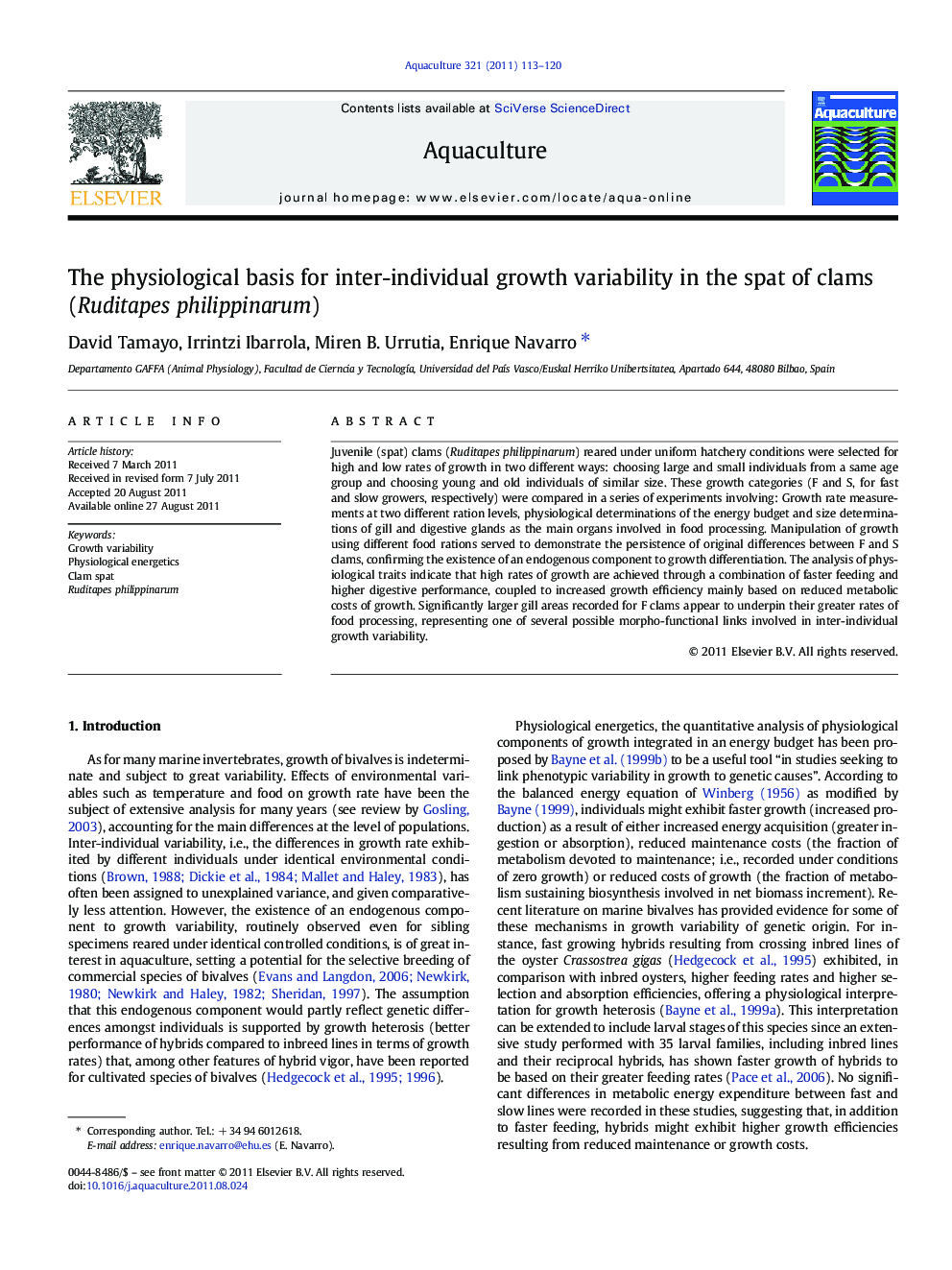| Article ID | Journal | Published Year | Pages | File Type |
|---|---|---|---|---|
| 2422880 | Aquaculture | 2011 | 8 Pages |
Juvenile (spat) clams (Ruditapes philippinarum) reared under uniform hatchery conditions were selected for high and low rates of growth in two different ways: choosing large and small individuals from a same age group and choosing young and old individuals of similar size. These growth categories (F and S, for fast and slow growers, respectively) were compared in a series of experiments involving: Growth rate measurements at two different ration levels, physiological determinations of the energy budget and size determinations of gill and digestive glands as the main organs involved in food processing. Manipulation of growth using different food rations served to demonstrate the persistence of original differences between F and S clams, confirming the existence of an endogenous component to growth differentiation. The analysis of physiological traits indicate that high rates of growth are achieved through a combination of faster feeding and higher digestive performance, coupled to increased growth efficiency mainly based on reduced metabolic costs of growth. Significantly larger gill areas recorded for F clams appear to underpin their greater rates of food processing, representing one of several possible morpho-functional links involved in inter-individual growth variability.
